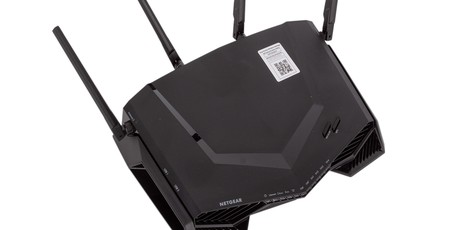
The Netgear Nighthawk Pro Gaming XR500
Most people will know about Netgear but maybe not Nighthawk, which is the company’s pro gaming brand. The reason the XR500 interested me more than what I’d seen from other gaming routers (my experience is admittedly cursory and limited) is the Netduma DumaOS software which it uses to expose a variety of features that actually looked genuinely useful from a gaming and network management perspective. Delving into router menus before has never been fun or intuitive, especially for novice users. The same is often true for the related field of NAS devices, although things have improved a lot there. However, when you look at the very best NAS products, such as those from Synology, a big part of the reason they’re well regarded is that the software makes things easy to do.

Netduma actually produced a router of its own, the R1, and while it gained traction amongst enthusiasts, the Netgear name is obviously far more weighty, and it has the capacity to produce high-end routers at scale, so the partnership makes sense. Netgear has a variety of Nighthawk gaming routers, too, but the XR500 is unique in running DumaOS and the first third-party product to do so.

As such, it’s DumaOS that’s the real focus here. While the XR500 is not a low-spec router by any means, it’s also not a top-spec model, especially for the price. For instance, it is dual-band rather than tri-band, offering up to 800Mbps at 2.4GHz and 1,733Mbps at 5GHz for 2.53Gbps total, hence the AC2600 rating, with the Wi-Fi delivered over four antennas. Inside is a 1.7GHz dual-core processor and 512MB of memory. Other noteworthy specs are the four Gigabit LAN ports, plus a fifth for the WAN connection (this is a router only with no modem inside), and two USB 3.0 ports. The hardware is solid but unremarkable, essentially.

Inside the box is the router, a yellow Ethernet cable, a power adaptor, and a quick start guide. The technology industry still seems to have a frustrating tendency to merge childish designs with very much adult-grade price tags when it comes to gaming products, and the XR500 falls into this trap. It’s not easy to make anything with four antennas look cool or understated, but a masterclass in design the XR500 is not, and the heavy use of cheap looking plastic is a bit sad. Hopefully the DumaOS experience will make up for this.

MSI MPG Velox 100R Chassis Review
October 14 2021 | 15:04





Want to comment? Please log in.